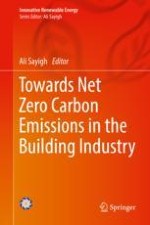2023 | OriginalPaper | Chapter
Green Urbanism with Genuine Green Architecture: Toward Net Zero System in New York
Authors : Derya Oktay, James Garrison
Published in: Towards Net Zero Carbon Emissions in the Building Industry
Publisher: Springer International Publishing
Activate our intelligent search to find suitable subject content or patents.
Select sections of text to find matching patents with Artificial Intelligence. powered by
Select sections of text to find additional relevant content using AI-assisted search. powered by
